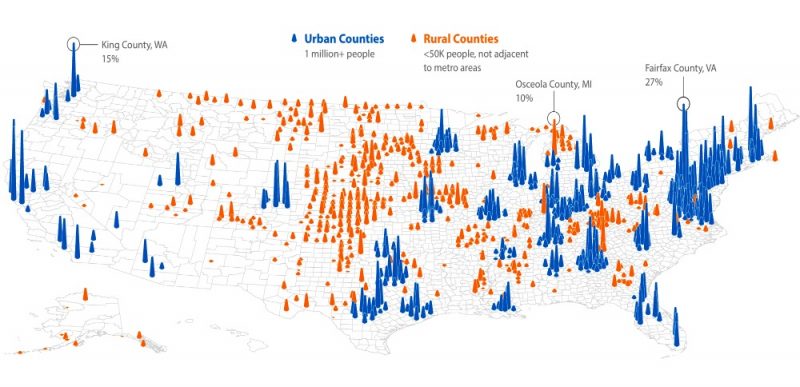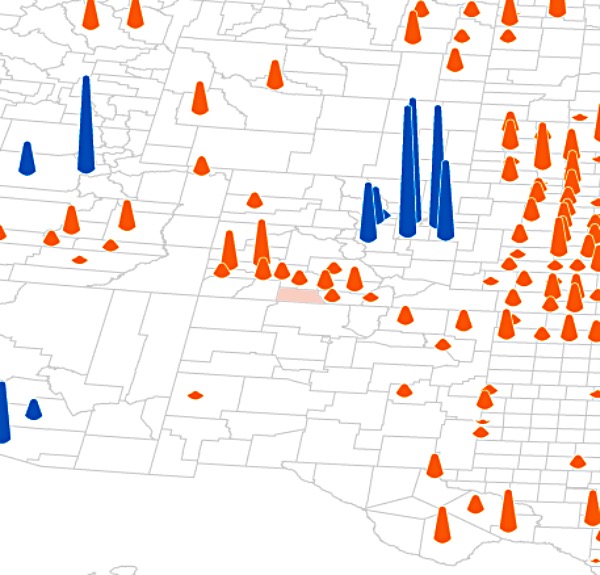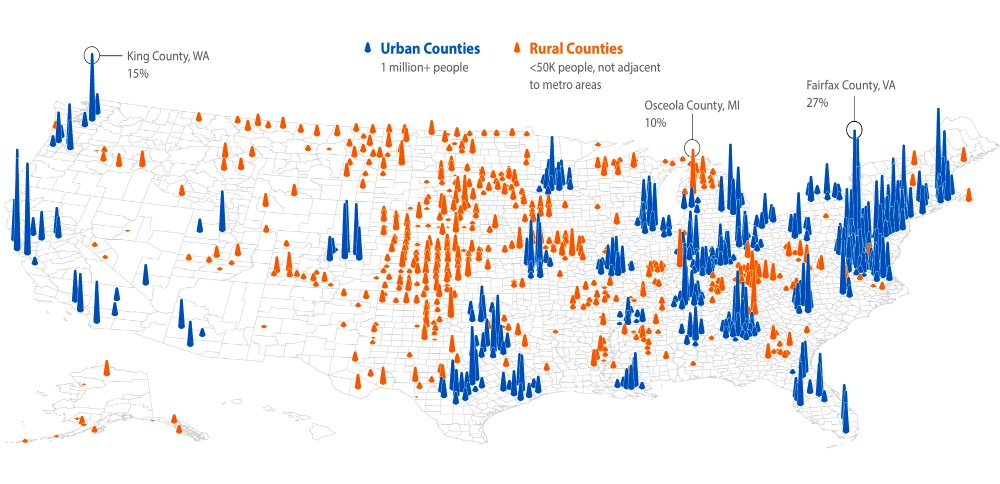“For the past quarter century, the story of these places has been one of relentless economic decline,” the article points out. A quarter century? Shouldn’t those who live there have started to think about the problem by now, and address it?
— from a 2018 op-ed by Allan Golombek on RealClearMarkets.com
After the The New York Times posted its December 2018 op-ed by Eduardo Porter — “The Hard Truths of Trying to ‘Save’ the Rural Economy” — a few national columnists took the opportunity to react to Mr. Porter’s article, including a snarky piece by Allan Golombek, who apparently believes that rural America has made little effort to ‘save’ itself… by its own bootstraps, so to speak.
Mr. Golombek’s cynical solution to the problem of ‘relentless economic decline’ (assuming such a problem indeed exists?) is simply to advise the residents of rural America to accept their fate, and pack up and move to the big city. He writes:
Apparently, what too few have considered is that maybe it is time to pack rural America up, or at least time for many who live there to go elsewhere in search of a better job and more satisfying life.
I must assume Mr. Golombek already lives in a big city and has little familiarity with rural America, because that’s exactly what millions of former rural residents did over ‘the past quarter century’. They packed up and moved to the city. But whether they found life in the big city ‘more satisfying’? I’m sure some did… and surely, some didn’t.
Mr. Porter, writing in The New York Times last year, took a different tack.

One key image in Mr. Porter’s analysis of ‘how to save rural America’ showed the “Share of digital and technology jobs” in various counties. The urban county (shown in blue) with the highest percentage of technology jobs was Fairfax, Virginia, adjacent to Washington DC, where about 27% of the jobs are apparently related to “digital/technology”.
The map doesn’t illustrate the percentages for every county; it illustrates only “urban” counties with more than 1 million people, and rural counties with fewer than 50,000 residents not adjacent to a metro area. The two extremes, so to speak, in terms of population.
Archuleta County certainly qualifies as a rural county with fewer than 50,000 residents, and last time I looked, we were not adjacent to a metro area. But the Brookings Institute map indicates no technology jobs at all for our little town. Zero. (Archuleta County has been colored in pink, below.)

Mr. Porter’s article references a study by the Brookings Institution, the folks who generated the maps above.
In a report published in November, Mark Muro, William Galston and Clara Hendrickson of the Brookings Institution laid out a portfolio of ideas to rescue the substantial swath of the country that they identify as “left behind.” They identify critical shortages bedeviling declining communities: workers with digital skills, broadband connections, capital. And they have plans to address them: IT training and education initiatives, regulatory changes to boost lending to small businesses, incentives to invest in broadband…
The central fallacy bedeviling these analysts is not hard to identify.
If a doctor walked into a major hospital and announced in his most authoritative voice that the solution for healing all the patients — regardless of their ailment — was chemotherapy, he would be quickly whisked off to the nut house. Any five-year-old could tell you that each patient is different and somewhat unique, and will likely respond best to a customized treatment designed for his or her own illness and physical condition.
But some really smart people, like the consultants at the Brookings Institution, or the columnists at RealClearMarkets.com, feel comfortable proposing a single solution for “saving rural America” when in fact rural America is no more sick than urban America. We just happen to be living in a different wing of the hospital, and each of us has unique challenges based on our history, our available resources, and our local leadership (or lack thereof.)
Mr. Porter hinted at this fallacy, at the conclusion of his New York Times op-ed.
And if today’s polarized politics are noxious, what might they look like in a country perpetually divided between diverse, prosperous liberal cities and a largely [conservative] white rural America in decline? As Mr. Galston warned: “Think through the political consequences of saying to a substantial portion of Americans, which is even more substantial in political terms, ‘We think you’re toast.’ ”
The distress of 50 million Americans should concern everyone. Powerful economic forces are arrayed against rural America and, so far, efforts to turn it around have failed. Not every small town can be a tech hub, nor should it be. But that can’t be the only answer.
The distress of 50 million Americans, who happen to live mostly happily, and relatively independently, in some of the most scenic places in the US, or on some of the nation’s most fertile agricultural land, far removed from the polluted urban rat race, can become the focus of analysts who think — for some reason — that we’d become less ‘distressed’ if only we had more freeways, and corporate headquarters, and broadband towers.
Mr. Porter may indeed believe that “powerful economic forces are arrayed against” those of us who’ve willingly chosen a rural lifestyle. What he doesn’t mention are the “powerful economic forces” that exist in urban areas, oppressing unfortunate people who feel that life in a big city is their only option.
That said, we know that every community — urban or rural — has its struggles and controversies. We have them here in Archuleta County. There’s never enough money or time to provide for everyone’s [often conflicting] wants and needs. Over the past 20 years, I’ve heard numerous well-meaning people propose that Pagosa Springs needs a ‘shared vision.’ That we would finally become happy and wealthy and successful, if only we could all agree on the same path forward, if only we would all grab a paddle and stroke in the same direction.
Numerous leaders have proposed this as the ‘solution’ to what they perceive as our problems as a rural community.
Well, isn’t that exactly what we’ve been doing? And isn’t that exactly why we have the problems we have?

